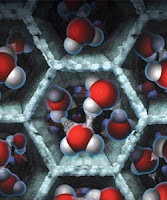Main Idea:
Materials Science and Engineering which includes the depiction of the physical and chemical properties of strong materials metals and materials, ceramics, attractive materials, polymers, visual materials, semiconductors, superconductors, and composites for the purpose of using, changing, or improving natural qualities to create or improve end products.
Materials science and engineering which includes analyzing how the microstructure (crystalline or amorphous) of a content can be modified to impact the strength, electric conductivity, visual, or attractive qualities of a content. This field is naturally multidisciplinary, covering technical, chemical, biomedical, municipal, electric, and aerospace engineering; physics; and chemistry.
Materials in Industry:
Radical material developments can generate the development of new products or even new sectors, but constant sectors also implement components researchers to make step-by-step upgrades and diagnose problems with currently used materials. Industrial applications of materials science consist of components design, cost-benefit tradeoffs in industrial development of components, handling methods (casting, moving, welding, ion implantation, amazingly development, thin-film buildup, sintering, glassblowing, etc.), and systematic methods (characterization methods such as electron microscopy, x-ray diffraction, calorimetry, atomic microscopy (HEFIB), small-angle X-ray spreading (SAXS), etc.).
In industry materials researchers and engineers work with natural or man-made components and, most often, with blends of components, to improve current items or to develop novel items. For instance, at Intel, the designer of the processor used in most PCs, components researchers improve the components used in processor appearance, controlling varying coefficients of heat development, head dissipation, brittleness and compliancy, and cost for the best possible performance and economic practicality.
Materials science and what do they do?
You have probably observed of a drug store, a biologist or a physicist, but have you ever observed of a materials scientist? It seems somewhat funny right. Probably your answer is no. One reason is that materials science includes a large variety of action and variations on many different areas - such as chemistry, biology and physics. Sometimes materials scientists are known as clay or polymer engineers or metallurgists, and you can find them working in sectors, laboratories, and colleges all over the world. But different as they are, materials scientists look at components from a specific point of view: they look for relationships between the actual framework of content, its material, how handling changes it, and what the content can do its performance.
The OMICS Publishing Group International Scientific Conference and Exhibition on Materials Science and Engineering -2013 will schedule and coordinate all meetings with our Editorial Board Members and other experts in the Research and Safety field across the world. The scientific Conference will be held during October 15-17, 2013 at San Francisco, USA.

